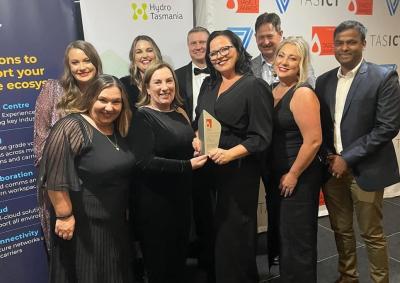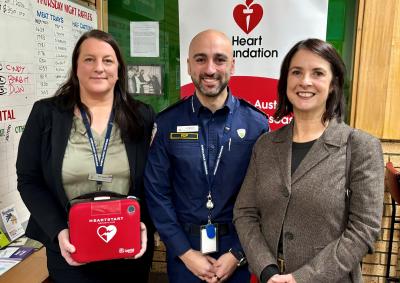The Digital Health Transformation program 2022 - 2032
The Digital Health Transformation Strategy Improving patient outcomes (2022 to 2032) was launched by the Premier and the Minister for Health, Mental Health, and Wellbeing in May 2022 to tackle the health challenges facing Tasmania.
The Strategy aligns with the Department’s Strategic Priorities and the actions outlined in the Long-Term Plan for Healthcare in Tasmania 2040.
The Digital Health Transformation program (the Program) aims to empower both consumers and healthcare professionals by leveraging system-wide, digitally enabled technologies to improve patient outcomes.
The Program has a 10-year duration (2022–2032) and is funded by the Tasmanian Government.
The Program collaborates with a variety of partners and key stakeholders, including the Australian Digital Health Agency, Primary Health Tasmania, Health Consumers Tasmania, peak bodies, unions, industry participants, and, crucially, our healthcare staff, consumers, families, and volunteers.
Our commitment is to enhance healthcare across Tasmania, creating a more connected and accessible health system that meets the diverse needs of all Tasmanians, regardless of their location.
Program phases & projects

- Horizon 1 was completed on 30 June 2024, focusing on maximising our existing resources by enhancing access to current systems and expanding essential capabilities.
- This phase laid a strong foundation for future advancements in our healthcare system while preparing for the significant changes and investments in Horizon 2.
- The Program is currently in Horizon 2. This phase aims to establish a comprehensive digital health record that integrates acute, outpatient, and community care, along with specialty and diagnostic systems to support primary care and enhance consumer interactions.
- Key outcomes include:
- Modern Ambulance electronic Patient Care Record (AePCR) and Electronic Medical Record (EMR) capabilities:
- Improved patient flow, scheduling, and demand management
- Consumer portals for better access to information
- Well-integrated clinical systems
- Enhanced information sharing across care settings
Completed projects
A new and improved digital discharge summary to provide seamless patient care transitions
A clinical decision support tool to reduce the harms associated with high-risk prescription medicines
A digital solution which provides timely delivery and notification of echocardiogram results
Allows clinicians to quickly and securely message interstate providers directly through HSC Clinical Suite
A new digital solution providing improved prevention and control of infection at the North West Regional Hospital (NWRH)
Allows the capture of medication history before a patient is admitted so it is available to treating clinicians as soon as they arrive on a ward
A dashboard that simplifies managing external pathology results
Royal Hobart Hospital (RHH) stroke patients receive a tailored post-discharge plan with all their information in one place
A mobile technology to enable citizen responders to provide lifesaving care for cardiac arrest
Staff can directly enter alerts and allergies into the patient's digital health record, improving accuracy and eliminating paper forms.
Strategies & publications
- Digital Health Transformation strategy 2022-2032
- Overview-Digital Health Transformation strategy
- Our Healthcare Future Progress summary reports
- Long-Term Plan for Healthcare in Tasmania 2040
Contact us
To ask us a question or for media enquiries, please email [email protected]




